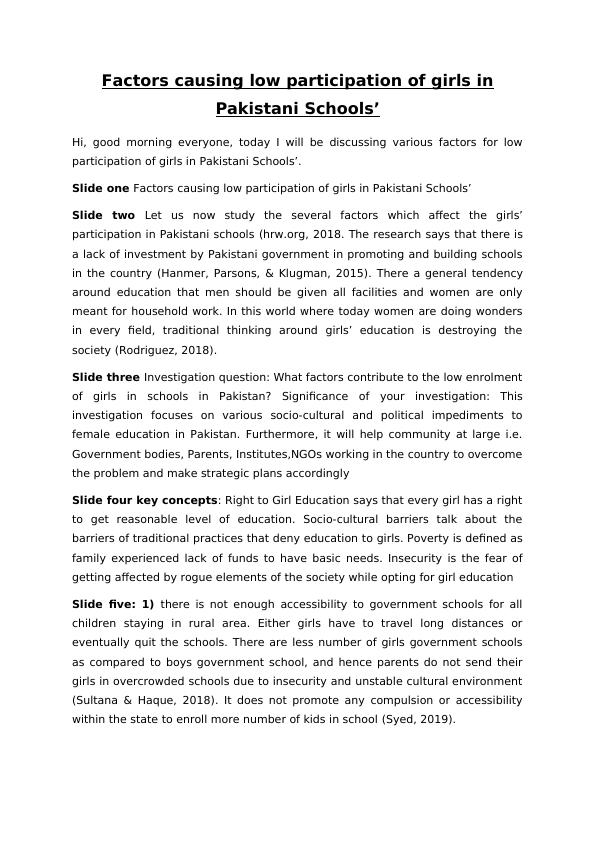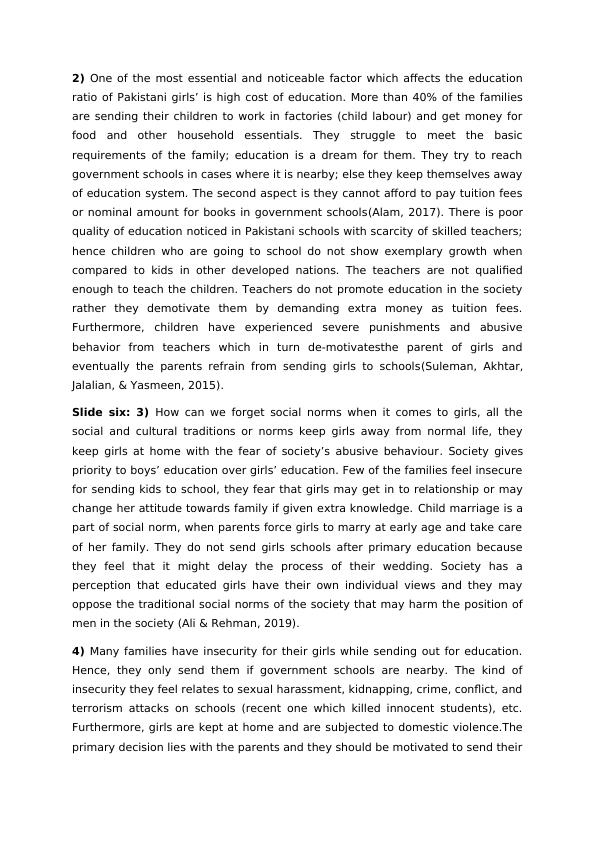Factors causing low participation of girls in Pakistani Schools
Investigation on mental health programs for tertiary institutions to assist students in protecting their mental health
4 Pages1353 Words91 Views
Added on 2022-12-21
About This Document
This article discusses the factors causing low participation of girls in Pakistani schools. It highlights the lack of investment by the government, socio-cultural barriers, high cost of education, and social norms as major obstacles. The article emphasizes the significance of addressing these issues and promoting girls' education in Pakistan.
Factors causing low participation of girls in Pakistani Schools
Investigation on mental health programs for tertiary institutions to assist students in protecting their mental health
Added on 2022-12-21
ShareRelated Documents
End of preview
Want to access all the pages? Upload your documents or become a member.
Socio-cultural and Political Impediments to Female Education in Pakistan
|4
|622
|56
Factors Causing Low Participation of Girls in Pakistani Schools
|7
|1000
|30
(PDF) Parents' Attitude towards Higher Education of Girls
|11
|3886
|88
Gender Discrimination and Early Childhood Education in Australia
|10
|2620
|89
Diversity, Inclusion and Special Education
|15
|4357
|42
Challenges and Strategies for Literacy Learning in Aboriginal Children
|10
|2164
|373


